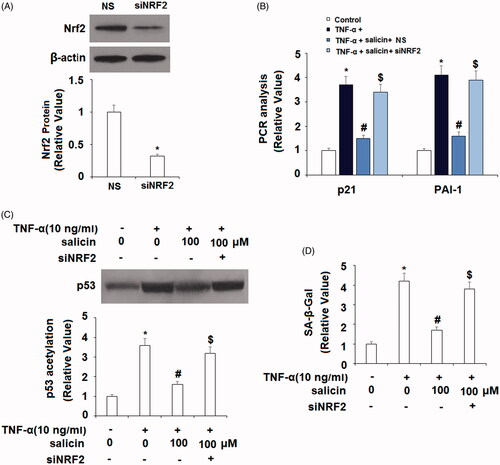Figures & data
Figure 1. Salicin inhibited TNF-α-caused elevation of SA-β-Gal activity in HUVECs. Cells were incubated with TNF-α (10 ng/mL) or salicin (50 and 100 μM) for 48 h. (A) Cellular senescence in HUVECs was measured by SA-β-Gal staining. (B) Percentages of SA-β-gal positive cells (*,#,$p < .01 vs. previous group).
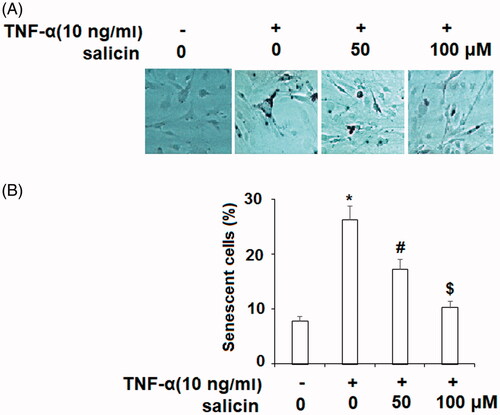
Figure 2. Salicin prevented TNF-α-caused cell cycle arrest in the G1 phase in HUVECs. Cells were cultured with TNF-α (10 ng/mL) or salicin (50 and 100 μM) for 48 h. Cell cycle analysis was measured using FACS (*,#,$p<.01 vs. previous group).
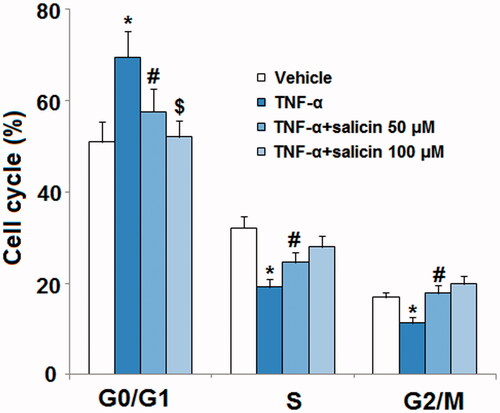
Figure 3. Salicin reduced TNF-α-caused expression of p21 and PAI-1 in HUVECs. Cells were incubated with TNF-α (10 ng/mL) or salicin (50 and 100 μM) for 48 h. (A) mRNA levels of p21 and PAI-1. (B) Protein levels of p21 and PAI-1 (*,#,$p < .01 vs. previous group).

Figure 4. Salicin prevented TNF-α-caused K382 acetylation of p53 (ac-K382). HUVECs were incubated with TNF-α (10 ng/mL) or salicin (50 and 100 μM) for 48 h. Acetylation of p53 was measured with immunoprecipitation (*,#,$p<.01 vs. previous group).
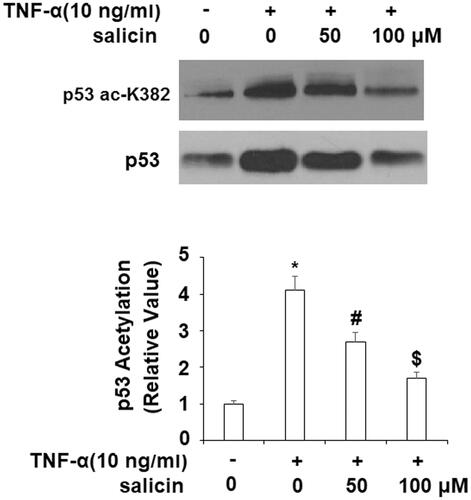
Figure 5. Salicin promoted the nuclear translocation of NRF2. Cells were treated with TNF-α (10 ng/mL) or salicin (50 and 100 μM) for 48 h. Nuclear levels of NRF2 in HUVECs were measured (*,#,$p < .01 vs. previous group).
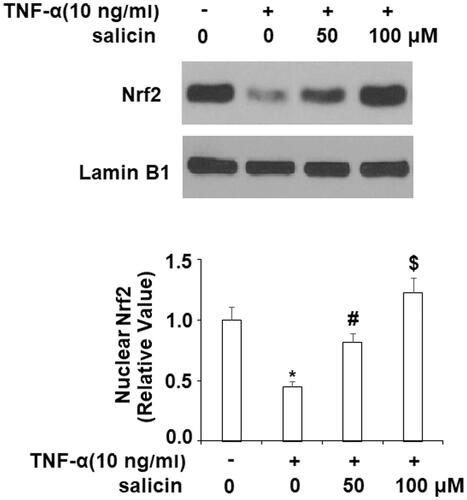
Figure 6. Salicin prevented TNF-α- induced oxidative stress in HUVECs. Cells were incubated with TNF-α (10 ng/mL) or salicin (50 and 100 μM) for 48 h. Production of ROS was measured using DCFH-DA staining (*,#,$p<.01 vs. previous group).
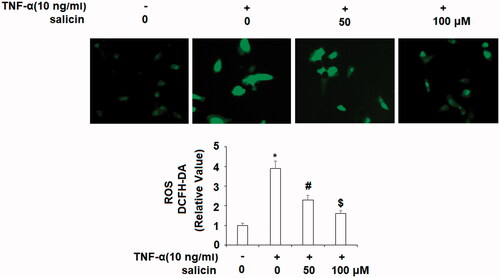
Figure 7. Silencing of NRF2 abolished the effects of salicin in inhibiting cellular senescence in HUVECs. Cells were transfected with NRF2 siRNA. Twenty four hours later, cells were incubated with TNF-α (10 ng/mL) or 100 μM salicin for 48 h. NS: non-specific small RNA; siNRF2, NRF2 siRNA. (A) Successful knockdown of NRF2. (B) Silencing of NRF2 abolished the inhibitory effects of salicin on p21 and PAI-1 expression. (C) Immunoprecipitation assay revealed that knockdown of NRF2 abolished the inhibitory effects of salicin on p53 acetylation. (D) SA-β-Gal staining results demonstrate that silencing of NRF2 abolished the inhibitory effects of salicin in cellular senescence (*,#,$p<.01 vs. previous group).
